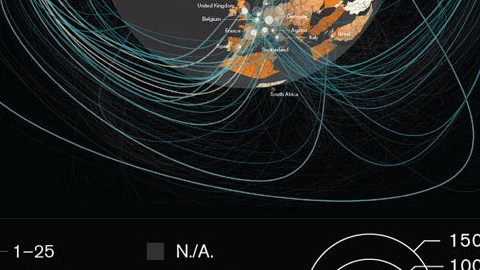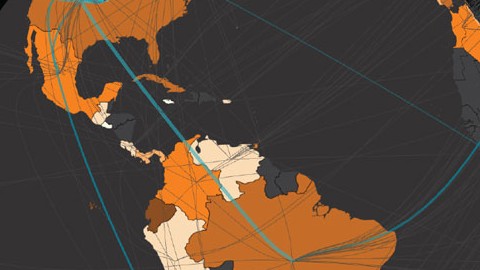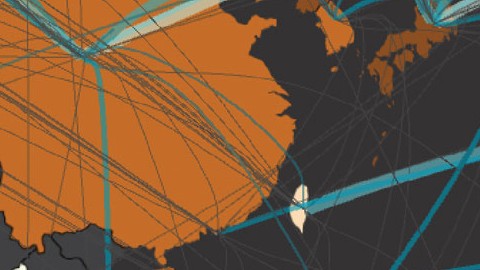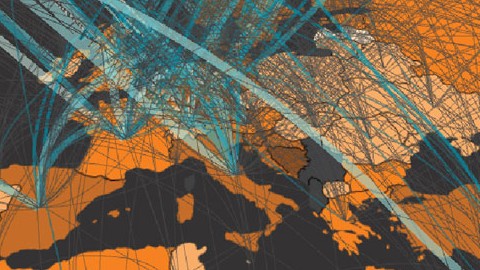Inventing across Borders
Mapping international collaboration in R&D.
Talk of globalization often focuses on manufacturing, but the map above shows that the creation of ideas and products is just as much an international affair. A growing number of applications filed under the international Patent Coöperation Treaty (PCT) have authors located in two or more countries. Each line in the map represents one of these collaborations between 2004 and 2006, revealing the complex architecture of global innovation networks.
Smaller countries that need to tap into bigger markets or the research infrastructure of their wealthier counterparts tend to participate heavily in international collaboration. Nearly half of Switzerland’s applications, for instance, involve a coauthor abroad; for Thailand, an export-dependent emerging nation, it’s three-quarters. Levels of international collaboration vary more among larger countries. Japan and Korea–whether because of geography, language, or culture–participate less in international coinvention than any other major patenters. The United States is the largest collaborator by volume, making connections with nearly every country on earth.
Map Legend:
Lines: PCT applications with coauthor located abroad, 2004-2006
Country Color: Percentage of PCT applications with coauthor located abroad
Bubble size: PCT applications authored by top 25 producers</p>



